








Instruments For Testing Your Innovations


High Current Amplifier

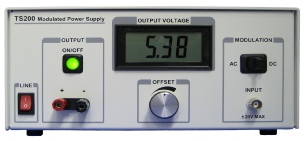



High Current Amplifier - Introduction
High current amplifier is a very useful piece of instrument to have in the lab. It is very handy for increasing the current driving capability of a function generator or arbitrary waveform generator. Many laboratory applications require high current amp to drive heavy load. Application for high-
Conventional function generator or signal generator has an output impedance of 50-
Figure 1. Simplified diagram is showing how to amplify signal from a function generator to delivery current to a heavy load.
Function Generator Is Not Strong Enough – The Problem
Function generators are commonly found in laboratories. They are being used for all kinds of tests and experiments. Conventional function generator or signal generator has an output impedance of 50-
Figure 2 and 3 shows how a function generator cannot drive heavy loads. The output impedance of the generator is 50-
Figure 2. A function generator outputs 0-
Figure 4 shows how the TS200/TS250 high current amplifier can drive the above mentioned heavy loads with negligible attenuation, because its source impedance is near zero. The TS200/TS250 current amplifiers has very low output impedance in the order of tens of mili-
High Output Current Amplifier – The Solution
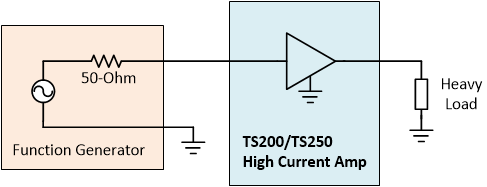

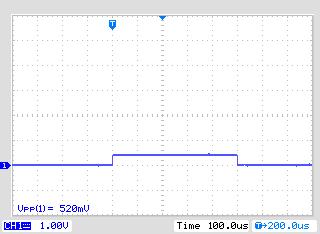
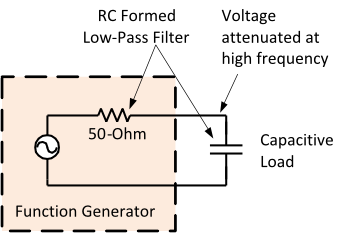

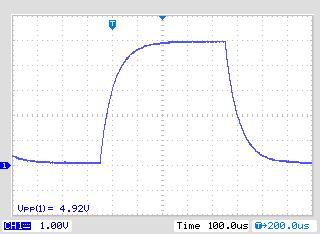
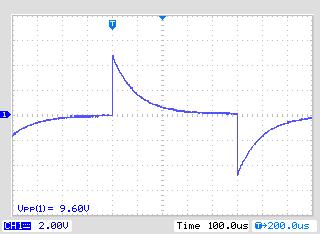
Figure 3. A function generator outputs a 0-
When the load is capacitive (Figure 3 top), the signal generator's source impedance and load capacitance formed a low-
Figure 4. TS200/TS250 high output current amplifier drives heavy load without voltage attenuation.
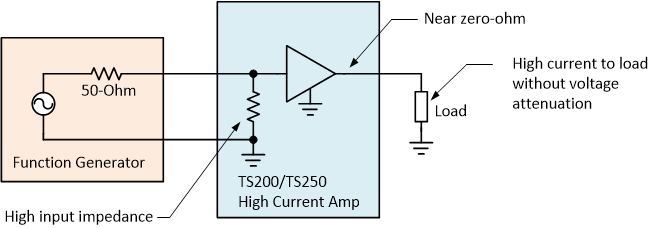
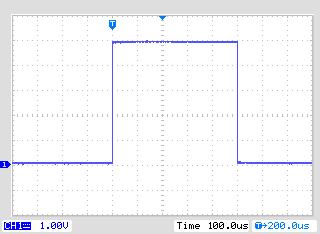

Figure 5. TS200 high-
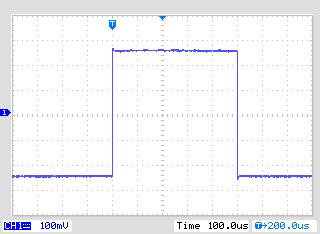
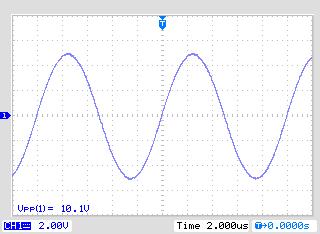
Figure 6. Left: The TS200 is driving a 4.7mH inductor. The output waveform maintains 5V square without any distortion or attenuation. Right: The TS200 amplifier is driving a 1-
Current Gain Amplifier
Current-
The TS200 and TS250 fulfill many testing applications that require high AC current to drive their low-
Higher Output Current
The TS250/TS200 output current is in the range of 1.4A to 6A, depends on the voltage range. See the datasheet specs for output current range. In some test applications higher current is required. Two or three TS250 current amplifiers may be operate in parallel as shown in Figure 8. The output current is double or triple in proportion to the how many TS250 connected in parallel. Using a series resistor for each current amp to isolate from one other. Typical series resistor resistance is 0.3Ω to 1.0Ω. Use higher resistance for for higher voltage models (i.e. 1 ohm for the +/-
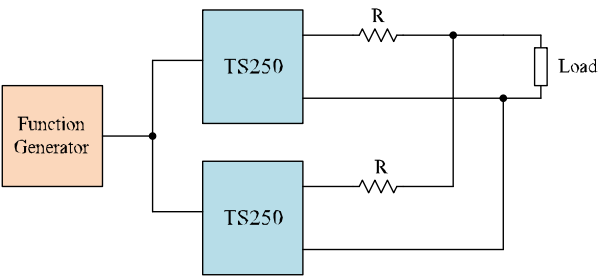
Figure 8. Two TS250 current amplifiers connected in parallel increase the current by 2X.
High Current Amplifier Application Examples
- Relay
- Solenoid
- Magnetic coil
- Helmholtz coil
- High-
power heat generation - Electrochemical reactor
- Piezo element
- Motor/actuator
- Circuit characterization
- Scientific and industrial testing
- Automotive transient test





Quick Links

Copyright: High-
Related App Notes
Table 1. High-Current Signal Amplifier Selection Guide
Model |
Voltage Range |
DC Current |
Max Peak Current |
|
TS200- |
- |
0 – 4.0A |
0 – 5.0A |
|
TS200- |
- |
0 – 2.8A |
0 – 3.8A |
|
TS200- |
0V to + 15V |
0 – 3.5A |
0 – 4.5A |
|
TS250- |
- |
0 – 5.0A |
0 – 6.0A |
|
TS250- |
- |
0 – 3.1A |
0 – 4.4A |
|
TS250- |
- |
0 – 2.1A |
0 – 3.0A |
|
TS250- |
- |
0 – 1.7A |
0 – 2.5A |
|
TS250- |
- |
0 – 4.0A |
0 – 5.0A |
|
TS250- |
- |
0 – 2.1A |
0 – 3.0A |
|
TS250- |
- |
0 – 1.7A |
0 – 2.5A |
|
TS250- |
- |
0 – 2.1A |
0 – 2.5A |
Figure 7. TS250 high output current amplifier is driving a heavy load.
High-Current Amplifier Connection

Function Generator